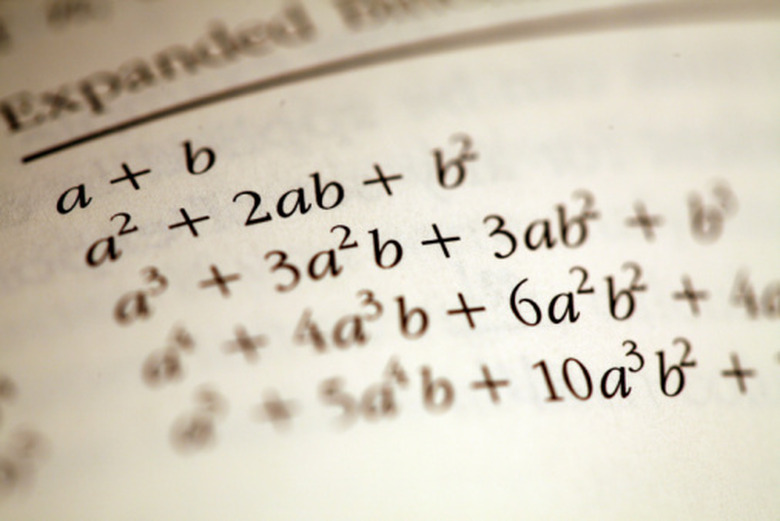How To Do Math Problems In Algebra 1
Remember Algebra 1 from the first few years of high school, struggling to figure out "X" or "Y," and then suddenly having to figure out both. Algebra still haunts some of us, if not in everyday life then perhaps helping your little one. Math problems in algebra generally only deal with equations that contain one or two variables, which with a little reminding, one can work through just as if they were back in the classroom.
Step 1
Decide if the problem contains one variable (usually a letter such as "x" or "y") or more than one variable.
Step 2
Follow the order of operations. Start any algebra problem beginning with parts that are encased in parentheses. Next, move on to powers such as square roots, and x^2. After simplifying the powers, work out the multiplication and division parts of the equation. Finally, add and subtract. Work the problem, with each step written out directly below the previous step in order to keep the process organized.
Step 3
Locate the variable or variables of the problem. If two variables are present, you will be given two equations, each containing two variables such as "x" and "y."
Step 4
Isolate and eliminate a variable. In order to get the equations down to one variable that is solvable, arrange the various parts of each equation so both problems are laid out with their variables in the same positions, and write one equation directly below the other. Choose any variable, but it must be the same for both equations, and multiply all parts of equation A so that the chosen variables contain the same number in front (4X). Pay attention to negatives and positives, as they should be the same for both of the variables we are working with. Subtract one equation from the other.
After subtracting the one equation from the other, you should be left with an equation containing only one variable, the opposite variable from the one you just eliminated using subtraction. Move any single numbers to the other side of the equals sign by adding the number to both sides if preceded by a subtraction sign, or by subtracting the number from both sides if preceded by a plus sign.
Step 5
Isolate the individual variable from any preceding number (for example, if it is 9X, isolate the "9" from the "X"). If a fraction, multiply by its coefficient (for example, if 2/3X multiply by 3/2). Now that the variable is alone on one side with its accompanying number, divide both sides of the equation by the number preceding your isolated variable; in this case, divide both sides of the equation by "9." Be sure when either multiplying or dividing to carry out the action upon all separate parts of the equation, which will isolate and solve one of the variables. Parts are separated by addition and subtraction signs, or by equals signs.
Step 6
Switch out the letter in the second equation for the newly solved variable. If you solved for "x" in the first equation, take that number and plug it into every place the "x" variable appears in the remaining unsolved equation.
Step 7
Isolate the final remaining variable. Move any single numbers not tied to the remaining variable to the other side of the equals sign by adding the number to both sides if preceded by a subtraction sign, or by subtracting the number from both sides if preceded by a plus sign.
Step 8
Divide both sides of the equation by any number directly preceding the remaining variable, finally solving the last part of the algebra problem.
Cite This Article
MLA
Braley, Benjamin. "How To Do Math Problems In Algebra 1" sciencing.com, https://www.sciencing.com/do-math-problems-algebra-1-8239794/. 24 April 2017.
APA
Braley, Benjamin. (2017, April 24). How To Do Math Problems In Algebra 1. sciencing.com. Retrieved from https://www.sciencing.com/do-math-problems-algebra-1-8239794/
Chicago
Braley, Benjamin. How To Do Math Problems In Algebra 1 last modified August 30, 2022. https://www.sciencing.com/do-math-problems-algebra-1-8239794/
